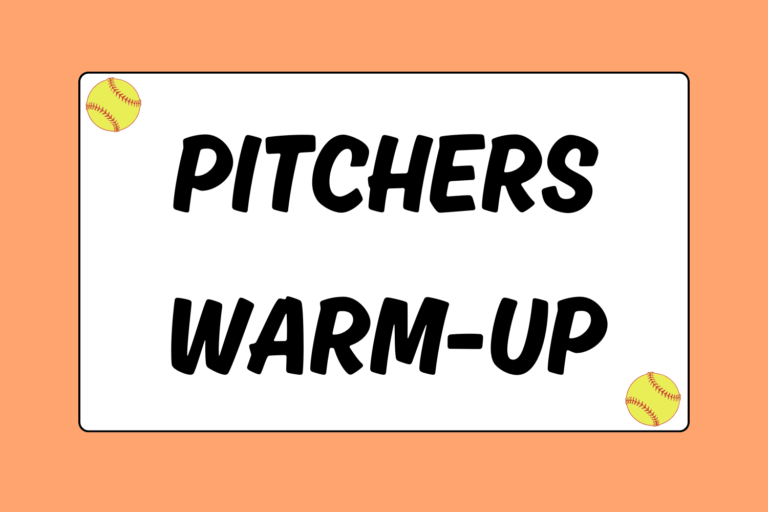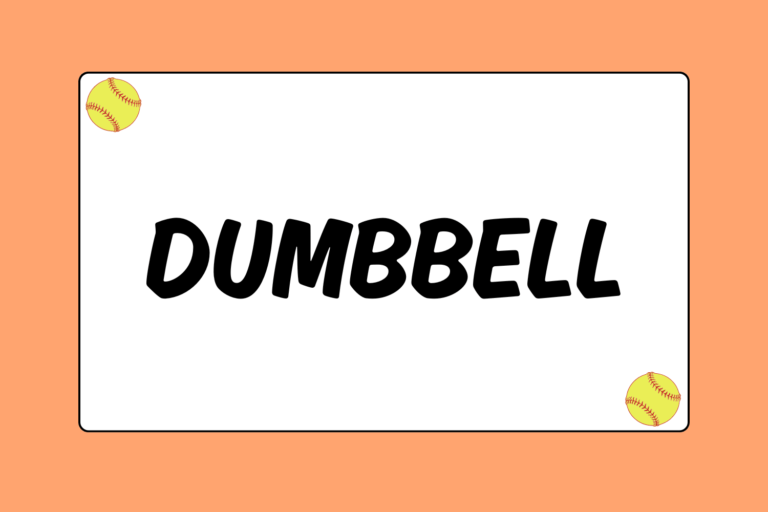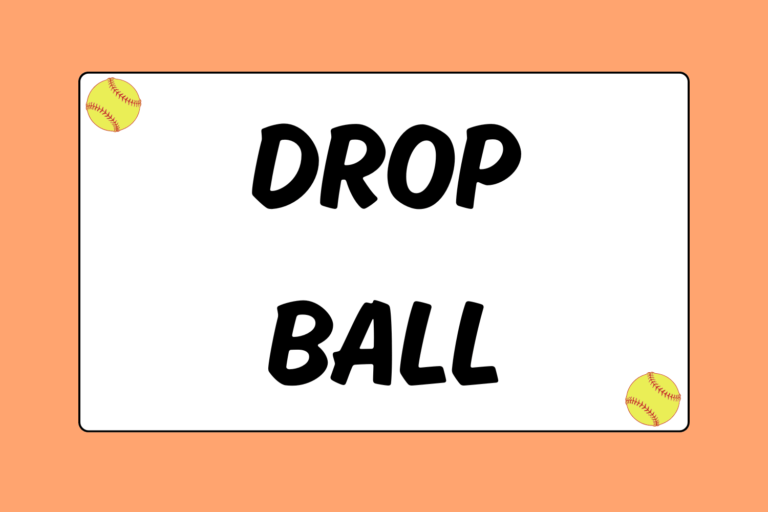When a softball team has runners on first and third with less than two outs, the pressure’s on and the defense has to be on its toes. But the thought of getting out of this situation can be daunting to the teams that aren’t quite ready.
A successful first and third play relies on a mutual understanding among the defense and quick reactions to the runners. This softball guide explains how to execute a first and third play. Follow along and your team will be fearless on the diamond!
1. The Catcher Calls It & The Infield Moves
The catcher will set up the play by relaying the defensive signal to the infielders. The pitcher, after taking the sign, will likely throw an intentional ball. The pitch should not be so far off the plate that it’s noticeable — she should just barely miss it. The easiest pitch for a catcher to handle is generally an outside pitch so the batter can’t interfere with a possible throw. Upon catching the pitch, the catcher will already be thinking to throw to second base.
The infield, meanwhile, will be sneaking in toward the baselines. Because there’s already a runner on third base, the inward shift should be expected — the girls just need to keep it casual. The shortstop and second baseman may also want to scoot towards second. They can do this by conveniently “smoothing” the dirt out in front of them as they inch towards second. While they can’t give up their positions, being a hair closer to second base will make the play a lot easier.
Hot Tip: Know the Sign!
If the infielder’s don’t know the sign, the opportunity to get the lead runner out could easily slip away. Make sure every player on the dirt knows the sign that will start this play.
2. The Catcher Makes the Throw
The runner at first base will likely be trotting to second base, enticing the defense to make the attempt on her, rather than on the runner at third. Everyone has to be on their toes, but they cannot give in to this trap.
The catcher will throw down to second base, regardless. If possible, she should throw from the squat position to cut down on turnaround time. But if she has to stand up and move her feet, she needs to be quick — one step and then throw.
3. The Shortstop Cuts In & the Second Baseman Covers
After the ball passes the batter, the shortstop will cut in towards the middle of the field, getting in position to cut off the throw to second. The prime spot for her to be is in line with the catcher, between the pitcher and second base. The second baseman will hustle over to cover second base.
4. The Shortstop Cuts the Ball, or Lets It Through
Depending on how the runner at third base reacts, the shortstop will do one of two things:
- Cut the ball off: If the runner at third base starts heading towards the plate, the shortstop will immediately cut the ball off and gun it home in an attempt to throw the runner out. Her footwork needs to be quick.
- Let it go through: If the runner at third base isn’t making a move towards the plate, there’s no reason to cut the ball off. In this situation, the shortstop should let the ball go through to the second baseman (who’s covering second) in an attempt to get the first runner out. The shortstop will fake catching the ball, and then fake a throw towards third. Her fake should be simple, but she needs to sell it for it to be believable:
- As the ball’s passing her, the shortstop will step to the ball as if she was going to cut it off.
- If she can get away with it, she’ll slap her glove to make it sound like the ball’s hitting her glove. (This will generally not be called since she’s not making an attempt to tag the runner, but be wary. If the umpire calls it, don’t dispute his call!)
- As soon as the ball passes the shortstop’s glove, she will immediately move her feet and turn her entire body towards third base, as if she was going to try and pick off the runner from third. It will be really believable if she can do this in one quick step.
- She’ll then pump fake a throw to third base to freeze the runner.
5. The Second Baseman Covers & Tags or Throws
Like the shortstop, how the play unfolds determines what the second baseman will do.
The Runner at Third Goes Home
If the shortstop cuts the ball off, it’s because the runner at third is heading home. In this case, the second baseman needs to stay on the bag. Not only will she act as the backup in case of an overthrow, but she’ll be able to keep her eye on the runner coming from first.
If the play isn’t successful at the plate, the runner coming from first could try to advance to third. It will be the second baseman’s responsibility to let the infield know where this runner is headed.
The Runner at Third Freezes
If the shortstop lets the ball through, it’s because the runner at third froze and is staying put. In this case, the second baseman needs to catch the throw coming in from the catcher and tag the runner. However, a smart runner can make this situation a little more interesting. Below are two situations that can occur, followed by how the second baseman should handle them:
- The runner from first base jogs towards second base, or stops completely: A smart runner will force the second baseman to her, rather than running right into her. By doing this, she tries to take the second baseman’s focus off of the runner at third. However, the instant the second baseman turns her head and makes a move towards first, the runner at third can take off to the plate. Because of this, the second baseman needs to treat the runner coming from first base as if she’s attempting a rundown:
- After she catches the ball, she’ll take the ball out of the glove and keep it in the air, as if she were in a rundown [link to rundown guide].
- Keeping her eyes on both runners, swiveling her head back-and-forth, she will try to force the runner back to first base.
- If she sees the runner at third attempt to run home, she’ll immediately turn and react to the runner. If the runner’s barely off the bag, the second baseman should turn her feet and try to pick her off. If the runner’s barreling down the line, the second baseman needs to throw the ball home.
- If she can tag out the runner coming from first base, she should. But if she does this, she needs to be prepared to throw to the plate immediately after the tag.
- The runner attempts the steal: If the runner actually attempts the steal, the second baseman should, without a doubt, try to get her out. (In this situation, the runner at third would be staying put.) This play should never be a guaranteed base for that runner. However, the second baseman’s eyes still need to be on the runner at third while the play’s happening. After tagging the first runner out, she needs to be ready to get up and throw home.
Everyone Talks
The success of this play relies on two factors: Communication and execution. Everyone on the field needs to be talking, especially the players on the bench (these players have the best view of the infield). The catcher needs to be speaking up, as well as the first and third basemen. The shortstop and second baseman need to be actively listening. Remember, this play should never be a guaranteed base or run for the opposing team. With some focus and plenty of practice, this play will eventually become routine.





